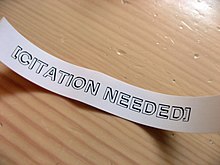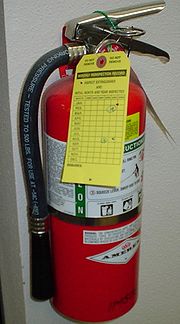Label
Labels have many uses, including promotion and providing information on a product's origin, the manufacturer (e.g., brand name), use, safety, shelf-life and disposal, some or all of which may be governed by legislation such as that for food in the UK[1] or United States.Labels for food and beverages typically include critical information pertinent to the contents or ingredients used in a product, and may also state allergy risks such as the presence of gluten or soy.These may carry pricing, barcodes, UPC identification, usage guidance, addresses, advertising, recipes, and so on.[14] Where literacy may be an issue, pictograms may feature alongside text, such as those advanced by CropLife International in their Responsible Use manual.[16] In some countries and industries, for example the UK (food)[17] and EU (medicines)[18] label guidelines are not legally binding (the latter using phrases such as "The type size should be as large as possible to aid readers...") and thus are unenforceable.On the other hand, countries may stipulate legal minima for readability, such as the USA's FDA on nutritional information[19] and Australia/New Zealand's code for food labels and packs.[20] Labels of sustainability standards and certification such as organic food and energy efficiency class labels are often intended to confirm compliance with relevant social and environmental considerations, enabling consumers and other purchasers to make more ethical decisions in terms of the environmental impact of products.Labels such as the European Eco-label and those issued by sustainability standards organisations may be used by businesses and public bodies to confirm compliance.[21] In June 2023, the Scientific Advice Mechanism to the European Commission concluded that the effectiveness of food labelling related to health impacts was "low to moderate" according to available evidence, and that "shaping the information environment through labelling is necessary but not sufficient to advance healthy and sustainable diets".[22] The approach of labels can involve a trade-off between financial considerations and higher cost requirements in effort or time for the product-selection from the many available options.Based on the solid waste hierarchy, the quantity and size of labels should be minimized without reducing the necessary functionality.Paper backings without wet strength may release their adhesives, potentially contaminating recycling efforts.








Label (disambiguation)bananasembossingembossing tapesignageplastic filmcontainerproductprintedlabellingbrand nameinternationally recognised standardspoisonsflammablewarningfood labelFood and Drug AdministrationPackagingTraffolytefrangibleLaundry symboldry cleaningleatherword processorcontact managerdata setSmart labelsradioactiveisotopescarbon-14in vivochemical compoundsSecurity labelscounterfeitingtamper-evidentanti-pilferage sealssecurity printingholographybarcodesauthenticationInternational Article Number (EAN)coatedpaperboardsNonwoven fabricPlasticsacetatePET filmstrengthstiffnesstransparencyultra-violetbumper stickerprinting typeAluminum foilplastic filmslabel printersubstratesilk screenPrintingblow moldingHot melt adhesivesPressure-sensitive adhesivesrelease linersRivetsShrink wrapSewingstarchdextrinswing tagacryliclabel dispenserU.S. flaglabel printer applicatorsprofessional writingpictogramsCropLife InternationalBraillevisual impairmentsustainability standards and certificationorganic foodenergy efficiency classethical decisionsEuropean UnionUnited KingdomScientific Advice MechanismEuropean Commissionfinancial considerationssustainable packagingwaste hierarchyLife cycle assessmentsrecyclingeco-labelFriend of the SeaPantonematchboxescheeseNameplateHead badgePackaging and labelingPressure-sensitive tapeStickerVehicle registration plateEUR-LexBibcodeAdhesiveDie cutting (web)HologramIn-mould labellingPerforationPressure-sensitive adhesivePlasticSecurity hologramRelease linerSecurity labelSmart labelAdvertisingBarcodeCountry of originCigarette warning labelEcolabelEU energy labelFair Packaging and Labeling ActList of food labeling regulationsMandatory labellingNutrition facts labelPlain tobacco packaging